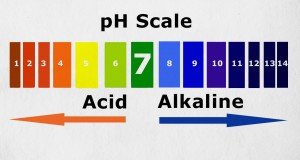Genetics or epigenetics? Which is more important in determining cancer risk?
 (NaturalHealth365) The fundamental debate that gives rise to and exercises the human psyche existed long before Socrates exposed the fundamentally flawed concept of human intelligence in ancient Greece. And this perpetual conundrum continues with the same ferocity to the present today – especially when it comes to understanding the concept of epigenetics and cancer risk.
(NaturalHealth365) The fundamental debate that gives rise to and exercises the human psyche existed long before Socrates exposed the fundamentally flawed concept of human intelligence in ancient Greece. And this perpetual conundrum continues with the same ferocity to the present today – especially when it comes to understanding the concept of epigenetics and cancer risk.
All that has changed throughout the eons are names and faces, but not the basic “argument.”
Epigentics and cancer: A major debate between Western and alternative medicine
So, which is it? Chicken or egg … which one produces the other? Mind or behavior … does the mind determine behavior, or is it a consequence of behavior? Figure or ground perception – words on paper, a horse in a field – which is the most important? Germ or milieu … Does the germ produce infection, or does the environment permit the germ to live and propagate (infection)?
Epigenetics or genetics … which one determines genetic expression – the original program of the DNA (genes) or the environment in which the genes exist?
Cancer lessons learned from Angelina Jolie
As most people know, American actress Angelina Jolie had both of her breasts surgically removed even though there was absolutely no sign of breast cancer in either breast. And furthermore, she has already planned to have both of her healthy ovaries removed as soon as she has recovered sufficiently from the first surgery.
Clearly, in the case of Angelina Jolie (plus many other women), those promoting the genetic side of the argument have been more convincing than those promoting the epigenetic perspective.
Briefly, BRCA genes refer to genes that exist in all people and whose function is to repair damaged, double-stranded DNA. If one of the parents has a mutation in this gene, 50% of the children are likely to have the same mutation hence this mutation exists equally in both sexes.
In order for this mutated inheritance to be a problem, the second gene, which was passed from the parent without the BRCA mutation, must undergo what is called somatic mutation (a mutation occurring after birth).
In other words, the normal gene that was inherited must be damaged after birth to the degree that a mutation is produced, resulting in both genes being defective. Even when this happens it is only the first step in the process since the BRCA genes are only one set of an entire group of enzymes that are involved in DNA repair.
But, wait, there’s more: What really affects our genes and cancer risk?
For these reasons, BRCA genes are said to be capable of “skipping” generations. In reality, genes do not “skip” generations. The offspring who inherits the mutated gene simply does not have enough toxic exposure to damage the other non-mutated BRCA gene.
Toxic exposure is epigenetics … that is, the environment in which the cell lives. If the interstitial fluid (matrix) surrounding the cells is sufficiently toxic, the BRCA genes, as well as all other genes, are at risk of being damaged and, if not repaired adequately, mutated.
The vast majority of cellular damage takes place at the outer cellular membranes (double layered) and, if significant to the point that a break occurs, the cytoplasm, or inside of the cell, becomes exposed and possibly damaged. Clearly, then, it is a long way to the nucleus, where the DNA is housed within another double-layered membrane, the nuclear membrane.
Somatic mutations (occurring after birth), accordingly, require a continual, highly toxic set of conditions in order for them to occur. Unfortunately, those circumstances are currently the norm on planet Earth, but nonetheless, it should be easily recognized that a set of environmental (epigenetic) stimuli is required to allow an inherited mutation (e.g., BRCA) to progress into a cancerous transformation.
Science reveals how the environment affects genetic expression and cancer risk
The Institute of Pathology (University Hospital Nijmegen) in the Netherlands published a study in 1995 wherein they were able to show that the angiogenic (new blood vessel formation) factors responsible for tumor growth and metastases (spread) could be manipulated by altering the oxygen concentration in the environment of the cells.
In other words, when the oxygen concentration was lowered, the gene expression of VPF (vascular permeability factor) increased. VPF is also known as vascular endothelial growth factor (VEGF); hence when the oxygen concentration around cells decreases, the cells’ response is to produce more blood vessels in order to bring more blood carrying oxygen to the cells.
It is well known that cancer is an anaerobic, homeostatic response to a low-oxygen environment. Hence, as the oxygen concentration continues to be low, cancer will develop, grow, and spread by inducing the increased production of these proteins, which produce new blood vessels. “… epigenetic events … represent fundamental aspects of cancer, and play key roles in neoplastic transformation and tumor progression,” Matouk et. Al, Institute of Medical Science, University of Toronto.
Simply put, epigenetics regulate whether or not a gene will be turned on or off, which, in turn, allows tumors to develop, grow and spread. And that phenomenon does not involve mutations. It is basically the same set of homeostatic responses that allows for all other physiological functions to occur, such as hormone levels.
These same authors went on the state, “Recent evidence suggests that epigenetic mechanisms play a major role in breast carcinogenesis, contributing to genetic instability in breast cancer … including cell cycle control genes (p161NK4a), steroid receptor genes (Era, PR, RARB2), tumor suppressor genes (BRCA1) and others.”
Their conclusions are that breast and other cancers develop, grow and spread as a result of epigenetics, or the microenvironment around cells. It is epigenetics that control gene expression, and it is abundantly clear from their last statement that estrogen, progesterone, and BRCA mutations all contribute to breast cancer development and progression only if the environment of the cells stimulates this malignant genetic expression.
Anderson et. al. from the University of Michigan published their review of the literature regarding nutrient status and the generation of DNA methylation, which has been shown to be the mechanism whereby epigenetics regulate genetic expression. One-carbon metabolism (methylation) is the result of several enzymes in the presence of dietary micronutrients, which include but are not limited to folate, choline, betaine, and other B vitamins. For this reason, nutrition status, particularly micronutrient intake, has been a focal point when investigating epigenetic mechanisms.
Furthermore, the ingested substances referred to as macronutrients (carbs, proteins, and fats) actually supply the basic raw materials necessary for repair, renewal, and new cell development. In summary, macronutrients supply the materials for regeneration, rejuvenation, and procreation, while micronutrients provide the mechanisms by which this all occurs.
The quality and quantity of our food intake directly contribute to whether or not we will develop cancer by turning off tumor suppressor genes and/or turning on other genes permitting tumor growth and metastases. In fact, these same authors were able to glean from their review and integration of human epidemiological data with that of animal studies that it is not only the mothers’ nutritional status that contributes to the child’s health but also that of the grandmother’s, as well.
“As parents, we have to understand better that our responsibilities to our children are not only of a social, economical, or educational nature, but that our own biological status can contribute to the fate of our children, and this effect can be long-lasting,” said Mihai Niculescu, M.D., Ph.D., study author from Nutrition Research Institute at the University of North Carolina at Chapel Hill, in Chapel Hill, N.C.
Although DNA encodes the potential for a cell’s activities, that potential can only become realized if the gene is expressed. Without being expressed, genes are no more relevant than a map lying on the floor in the backseat of the car.
So, with all of that in mind, it might be concluded that epigenetics are the answer to “which is it”, genetics or epigenetics? The answer lies in the ability to engage in self-dialectics.
Simply ask yourself, which is more important, my back or my front? Stars or space? In or out? As a moment’s reflection will reveal to you, they are both aspects of the same phenomenon and cannot be separated. And, in fact, it is the question, “Which is it?” that is the problem.
The answer, of course, is neither … it is both because they are two fundamental aspects of the same thing. Separating them is artificial since they are not separated anywhere except in our minds.
Sources for this article include:











